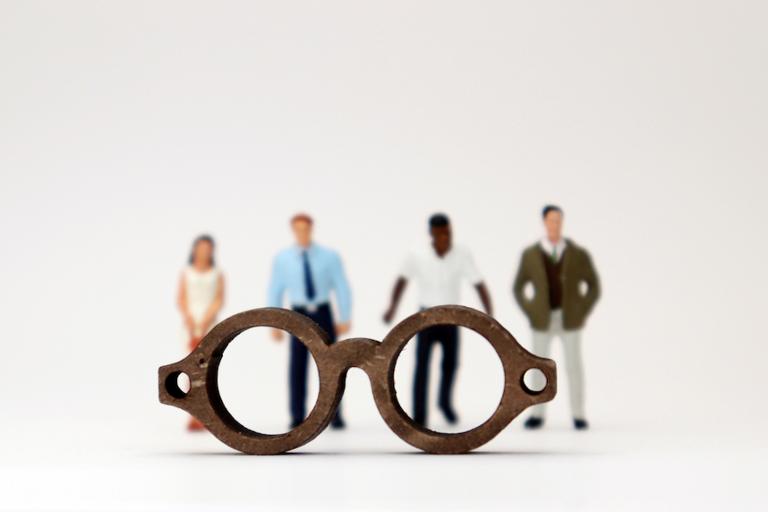Despite tech companies’ attempts to evaluate candidates in a fair, consistent and objective manner, research shows that technologists frequently encounter ageism and gender bias during the hiring process.
And those biases might just be the tip of the proverbial iceberg. In fact, there are dozens of biases that affect our judgment; research by Gartner shows that hiring decisions are one of the top areas within the talent lifecycle vulnerable to bias.
“The good news is that, while you can’t see your own biases in real time, you can see others’ biases in real time,” said Dr. David Rock, CEO and co-founder of the NeuroLeadership Institute.
With that in mind, here are some biases to be aware of during the hiring process, along with some ways to greatly reduce their effect or use them to your advantage.
Halo Effect… or Horn Effect
The halo effect is a type of cognitive bias in which the interviewer becomes so focused on one positive trait, skill or achievement that it colors their judgement about the candidate. They lose objectivity and overlook any negative facts or answers that contradict their preconceived ideas or initial impressions, explained Gail Tolstoi-Miller, CEO of Consultnetworx and an unconscious bias, diversity and inclusion strategist.
“The horn effect is the opposite,” she said. For instance, if a candidate arrives five minutes late to the interview, the hiring manager automatically assumes that they are disorganized and can’t meet deadlines. Game over.
You make the highly coveted and powerful halo effect work to your advantage by being recommended for the position, developing a strong reputation and personal brand, and making an effective and lasting first impression (and by showing up on time to the interview!).
Affinity or Similarity Bias
We all gravitate toward people like ourselves in terms of appearance, beliefs and background because they make us feel comfortable and safe.
“You can spot affinity bias when it feels like you’re joining a social club rather than interviewing for a job,” noted Tana Turner, an equity, diversity and inclusion consultant and founder of Turner Consulting.
When affinity bias comes into play, the hiring manager bases their decision on likeability. They ask themselves: Do I want to socialize with this candidate?
To forge a connection with the hiring manager, do your homework before an interview, look for clues in the office environment, and go out of your way to highlight the things you have in common.
Attentional Bias
Attentional bias is when a hiring manager becomes so focused on one thing—often something visual about the candidate—that they ignore everything else.
For instance, if you wear a loud tie to an interview, an interviewer with attentional bias may become distracted. They keep wondering why you would wear something like that and disregard other relevant data when evaluating your qualifications and suitability.
To make sure the interviewer remembers you in a good way, put yourself in “distraction-free” mode. Leave the gaudy attire at home.
Distance Bias
Distance bias is when we think people closer to us are better than those far away. “Our brains detect proximity and categorize everything as either close or far away in terms of time and space and basically gives greater value to things that are closer,” Rock said.
To overcome this type of bias when conducting a remote interview, make sure to get on camera or make yourself appear closer by responding quickly or being easy to get ahold of, he advised.
Opportunity Hoarding
Did you ever get the feeling that you were wasting your time because a job opening was earmarked for an internal candidate, a friend or perhaps a relative? When hiring managers “reserve” opportunities, you really don’t have an equal shot.
“The best thing that you can do is to get to know the organization and position yourself as an insider by being a referred candidate,” Turner said.
Confirmation Bias and Contrast Bias
Confirmation bias is the tendency to look for information that confirms a belief you already have about a candidate, and to subconsciously filter out or ignore evidence to the contrary. “It’s the tendency to make up a story to fit what you believe to be true about a candidate,” Miller said.
On the flip side, contrast bias is when a manager compares interviewees or résumés to each other instead of objectively comparing everyone to the job description or standard. When the standard is ignored, a candidate may seem to be more or less competent in contrast to the others but still be “off the mark.”
Safety Bias
Safety bias occurs when a manager is so afraid of making a hiring mistake that they focus on the candidate’s shortcomings, not their upside. An example might be a manger who insists on hiring someone from an Ivy League school because they theoretically pose less risk. In other words, bad is stronger than good.
To overcome safety bias, emphasize your strengths during the interview and application process, as well as the benefits of having a diverse team that brings varied ideas and perspectives.



